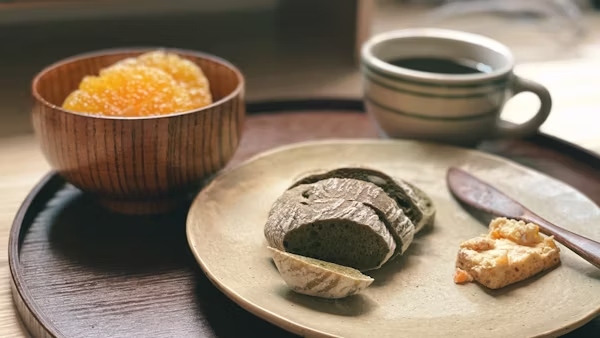In the expansive world of seafood delicacies, masago—the tiny, jewel-like roe harvested from capelin fish—has carved a remarkable niche. Once regarded as a humble byproduct of fishing in the icy waters of the North Atlantic, masago is now a global culinary treasure. Known for its delicate crunch, subtle brininess, and vibrant color, it enhances sushi rolls, fusion dishes, and even modern gastronomic experiments. But masago is more than just a garnish—it is a story of tradition, nutrition, and innovation.
This article explores the origins, cultural journey, nutritional value, and culinary innovations that make masago a small ingredient with a big global impact.
Origins of Masago
Masago comes from the capelin fish (Mallotus villosus), a small, smelt-like species found in the North Atlantic, Arctic, and North Pacific oceans. Traditionally, capelin fishing was oriented toward producing fishmeal and oil. The roe—masago—was once considered secondary.
-
Japanese Introduction: Masago first gained culinary prominence in Japan, where it became a popular substitute for tobiko (flying fish roe). Its smaller grain size and more subdued flavor made it a versatile, cost-effective alternative.
-
Global Export: By the late 20th century, masago was exported worldwide, especially to North America and Europe, where sushi culture was booming.
Flavor Profile and Culinary Appeal
Masago has a mild, slightly sweet, and briny taste. Its crunchy texture provides contrast in dishes, while its ability to absorb flavorings and colorings makes it a chef’s favorite.
-
Texture: Adds a satisfying “pop” without overpowering.
-
Flavor: Subtly salty, pairing well with rice, seafood, and sauces.
-
Appearance: Often dyed orange, red, or even black, masago creates visual vibrancy in sushi rolls, poke bowls, and hors d’oeuvres.
Nutritional Value of Masago
Masago is more than an aesthetic or textural addition—it is a nutrient-dense superfood in miniature form.
-
High in Protein: A lean source of protein, important for muscle health.
-
Omega-3 Fatty Acids: Rich in essential fatty acids that support cardiovascular and brain health.
-
Vitamins and Minerals: Contains vitamin B12, selenium, magnesium, and riboflavin.
-
Low in Calories: Compared to many seafood products, masago offers concentrated nutrition without excess calories.
However, masago is also high in cholesterol and sodium, making moderation key for balanced diets.
Cultural Dimensions
1. Japan and the Art of Sushi
In Japan, masago has long been prized as a sushi topping. While it lacks the prestige of tobiko, its accessibility made it a staple in everyday sushi culture, particularly in rolls where visual impact mattered.
2. Global Sushi Culture
As sushi spread worldwide, masago became an iconic garnish in California rolls, spicy tuna rolls, and fusion-style sushi. Its popularity underscores how culinary traditions evolve through adaptation and global demand.
3. Nordic Roots
Interestingly, masago’s source—the capelin—has deep ties to Nordic fishing traditions. While not always consumed locally, the roe represents a cross-cultural journey from the Arctic seas to global restaurant tables.
Culinary Innovation with Masago
Chefs and food innovators continue to experiment with masago beyond sushi:
-
Fusion Cuisine: Masago is incorporated into tacos, pastas, salads, and even scrambled eggs.
-
Flavor Infusion: Its porous texture allows it to absorb flavors like wasabi, yuzu, or squid ink, offering creative variations.
-
Fine Dining: Some chefs elevate masago to luxury plating, pairing it with oysters, foie gras, or innovative seafood preparations.
-
Street Food and Fast Casual: In poke bowls and sushi burritos, masago adds color, crunch, and nutritional value, appealing to younger, health-conscious diners.
Sustainability Concerns
The growing demand for masago raises important questions about sustainable fishing practices. Capelin are a critical species in marine ecosystems, serving as food for larger fish, seabirds, and marine mammals.
-
Overfishing Risks: Intensive roe harvesting could disrupt ecological balance.
-
Sustainable Alternatives: Some fisheries are adopting quotas and certifications to ensure responsible sourcing.
-
Consumer Awareness: Increasingly, diners and chefs alike are asking whether their masago comes from sustainable supply chains.
The Future of Masago
Masago is poised to remain a global favorite, but its story continues to evolve:
-
Culinary Innovation: Expect new uses in plant-forward fusion cuisine, with masago acting as a protein-rich, flavorful garnish.
-
Nutritional Focus: With rising health awareness, masago will be promoted as a nutrient-dense superfood.
-
Sustainability: Ethical sourcing will become central to its global market presence.
-
Cultural Hybridization: As chefs blend Japanese, Nordic, and global influences, masago will continue to symbolize cross-cultural culinary creativity.
Conclusion
Though tiny in form, masago carries an outsized global story. From its humble origins as capelin roe to its rise as a sushi staple and modern culinary darling, it reflects the interconnectedness of culture, cuisine, and commerce. Balancing its flavorful charm, nutritional benefits, and sustainability challenges will be key to ensuring its place in the future of gastronomy.






